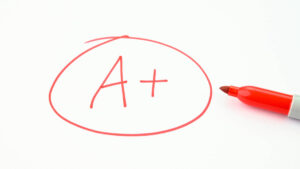The outlook for the next wave of lithium producers remains positive

Pic: Getty
Lithium is feeling the sting of the COVID-19 pandemic with producers reporting declining revenues or outright losses.
Prices fell another 1.6 per cent in May due to weak short-term demand. Added to this, the issues that plagued battery raw materials prior to the outbreak remain.
Ongoing uncertainty has prompted companies to delay expansions to preserve cash with producers Albemarle, SQM, and Livent collectively committing to $US285m ($411.3m) worth of cost cutting initiatives.
Local producers like Pilbara Minerals (ASX:PLS) and Galaxy Resources (ASX:GXY) have moderated production and reduced costs to position themselves for a market turnaround.
Battery supply chain experts Benchmark Mineral Intelligence noted that Chinese prices for lithium carbonate, lithium hydroxide and spodumene all fell in May.
It added that some cathode producers in South Korea and Japan are also having their second half 2020 orders renegotiated downwards on the back of a weak demand outlook from cell manufacturers.
However, the long-term outlook for lithium remains positive.
During April, Chinese new energy vehicle (NEV) production increased to 80,000 units.
While this is still down 22.1 per cent from 2019 levels, it represents a strong recovery from output in February, which was down 82.9 per cent from February 2019, according to Benchmark.
READ: 2020 could be the year that EVs move into the mainstream
This is due in part to the extension of Chinese NEV subsidies to 2022, which highlights the Chinese government’s willingness to stimulate demand.
As a result, Chinese battery cell and car manufacturers have maintained or improved their long term commitment to electrification.
This is significant given that rechargeable batteries accounted for 54 per cent of total lithium demand in 2019.
Other moves also demonstrate the belief that the long-term outlook for lithium remains positive.
SK Innovation has announced plans to spend $US727m on a second battery plant in the US while Volkswagen is making a US$1.1bn strategic investment in Chinese cell-maker Guoxuan.
Likewise, while European electric vehicle (EV) sales in April were down 64 per cent month-on-month, there have been steps taken to address this including France’s latest €8bn ($13.1bn) investment centred around EVs.
The European Union is also increasing current penalties for carbon dioxide emissions, which is expected to encourage automobile manufacturers to accelerate investment in EV manufacturing facilities and engage with battery, cathode and raw material suppliers.
Industry consultant Roskill is also confident about lithium demand with its longer term scenarios continuing to show strong growth over the coming decade.
It forecast that demand will exceed 1 million tonnes of lithium carbonate equivalent in 2027 with growth in excess of 18 per cent per annum to 2030.
Challenges in bringing the additional capacity for mined and refined lithium products online to meet demand could ensure that future refined lithium supply will remain tight in the mid-2020s.
Roskill also noted that the move towards high-nickel cathode materials, to increase battery energy density, is accelerating demand growth for lithium hydroxide.
The Next Wave
There is a cluster of advanced ASX-listed lithium explorers not exposed to prevailing low prices who are preparing for the next bull market.
One of the forerunners is AVZ Minerals (ASX:AVZ), which is progressing development of its Manono lithium and tin project in the Democratic Republic of Congo after completing a $10.7m placement from its strategic partner.
The company already has a definitive feasibility study that indicates that Manono would be capable of generating a post-tax net present value (NPV) of just over $US1bn ($1.58bn) and internal rate of return (IRR) of 33 per cent despite taking a conservative approach.
Both NPV and IRR are measures of a project’s anticipated profitability.
AVZ also estimated net profit after tax at $US3.8bn and a post-tax payback period of 2.25 years from the project.
Meanwhile, Argosy Minerals (ASX:AGY) has restarted industrial scale pilot plant and site operations at its Rincon brine project in Argentina.
The plant uses the company’s proprietary and environmentally clean chemical process technology to produce a 99.5 per cent purity lithium carbonate product for sale to Japan’s Mitsubishi Corporation.
Rincon has a current resource of 245,120 tonnes of LCE, enough for a 16.5 year mine life.
Core Lithium (ASX:CXO) recently raised $5.5m through a share placement and is seeking a further $1.5m through a share purchase plan to progress its flagship Finniss project just south of Darwin, Northern Territory.
This follows the signing of a non-binding offtake term sheet with Transamine Trading for the supply of 50,000 tonnes of spodumene concentrate per annum for five years, which adds to its existing binding offtake agreement with Yahua for 75,000tpa of spodumene concentrate.
Lepidico (ASX:LPD) is also charging ahead with the company releasing a definitive feasibility study in late May for its Karibib lithium hydroxide project in Namibia.
The project is expected to deliver an average $49m profit every year and take just three years to pay back.
The $US139m ($210m) development cost is split 30/70 between the mine and concentrator on a brownfields site in Namibia, and a chemical conversion plant in Abu Dhabi.
It also includes a 13.6 per cent ‘contingency’ in case of cost blowouts during construction and ramp up.
Operating costs after credits from these by-products include an all-in sustaining cost (AISC) of $US3,221/t for the integrated project.
Liontown Resources (ASX:LTR) has completed a review of mining options and recent metallurgical test work that has defined the potential to improve future economic returns from its flagship Kathleen Valley project in WA.
The review is part of an updated pre-feasibility study and supports the company’s strategy of targeting higher grade material for processing though the use of underground mining and optimised open-pit shells.
Liontown expects to release the updated PFS in the fourth quarter of 2020.
At Stockhead, we tell it like it is. While AVZ Minerals is a Stockhead advertiser, they did not sponsor this article.
Related Topics

UNLOCK INSIGHTS
Discover the untold stories of emerging ASX stocks.
Daily news and expert analysis, it's free to subscribe.
By proceeding, you confirm you understand that we handle personal information in accordance with our Privacy Policy.








